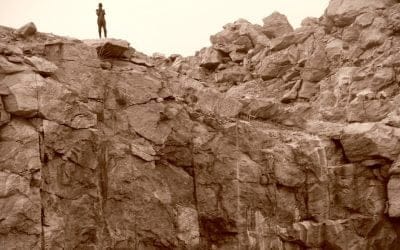This article originally appeared in the Cumberland Times-News, December 1st, 2021
CUMBERLAND — Tourism along the 150-mile Great Allegheny Passage drove over $121 million in economic impact in 2019, according to a year-long analysis by Pittsburgh-based consulting firm Fourth Economy.
To determine the extent of tourism-related spending and evaluate how the trail and its visitors are viewed, Fourth Economy conducted 64 interviews with local stakeholders and surveyed 125 owners of trail-facing businesses, 784 GAP users and 163 residents of trail towns — typically, small communities once dependent on coal, coke, paper, lumber and manufacturing. Its team estimated that GAP tourism generated over $74 million in direct spending, nearly $22 in indirect spending and almost $25 million in induced spending during 2019. The spending yielded an estimated $19 million in tax revenue in 2019, with $8.7 million in tax revenue going back to state, county and local governments, and it supported nearly 1,400 jobs.
“Bicyclists and hikers love the Great Allegheny Passage because they know that they can find bed-and-breakfasts, restaurants, shuttle services and outfitters in trail towns between Cumberland and Pittsburgh,” said Bryan Perry, executive director of the Great Allegheny Passage Conservancy. “Fourth Economy’s work indicates that small businesses, their employees and trail town residents are benefiting from GAP tourism.”
Mickey McGlasson, senior consultant at Fourth Economy, agrees. “Throughout our engagement work, one message was consistently reinforced: the GAP is a massive economic driver for the region through which it travels. In an attempt to better conceptualize our findings, we point out in the report that $121 million in annual impact translates to over $800,000 per mile. It looks like a scenic trail, but for the communities along the way, that’s an economic highway,” McGlasson said.
A 2009 economic impact assessment by Campos Inc. indicated that direct spending by tourists on the then-unfinished GAP totaled $40.7 million. By 2013, the trail was complete to Pittsburgh and entrepreneurs responded to increased travel — over a million visits a year, on average — by launching new businesses. Nearly 40% of business owners surveyed by Fourth Economy reported founding a new trail-facing business between 2015 and 2019.
Key findings from the study revealed that in 2019, the GAP welcomed 990,000 visitors and in 2020, almost 1.5 million visitors. Of the businesses, 44% were founded primarily to serve GAP users.
“COVID-19 has unveiled the true potential and value of a community’s access to natural resources and outdoor recreation. In fact, the Great Allegheny Passage saw a 52% increase in visitor traffic in 2020,” said Ashli Workman, director of tourism for Allegany County. “Our office organically sees the impact this trail has on our communities, so we find this study and its findings invaluable to our efforts.”
The Great Allegheny Passage runs 150 miles from Cumberland to Pittsburgh. Allegany County accounts for 20 miles of the trail. In 2019, the study reported that Allegany County benefited from $32.1 million in annual economic impacts. In 2020, Allegany County welcomed 184,372 visitors to its section of the trail, a 52% increase from 2019. Allegany County is also home to two trail towns — Frostburg and Cumberland.
The report concludes with a discussion of key opportunities and challenges facing both GAP businesses and communities. An executive summary and the complete 70-page report are available at www.gaptrail.org/updates.




